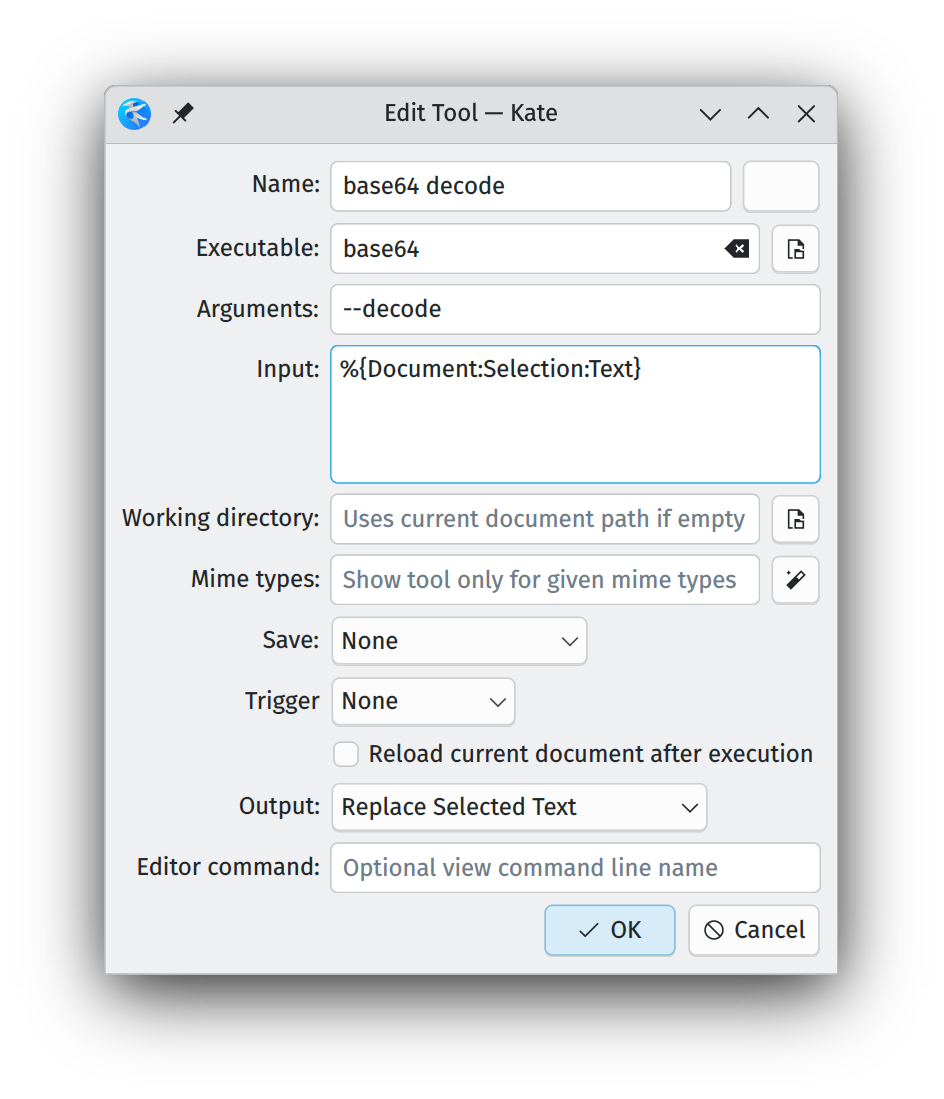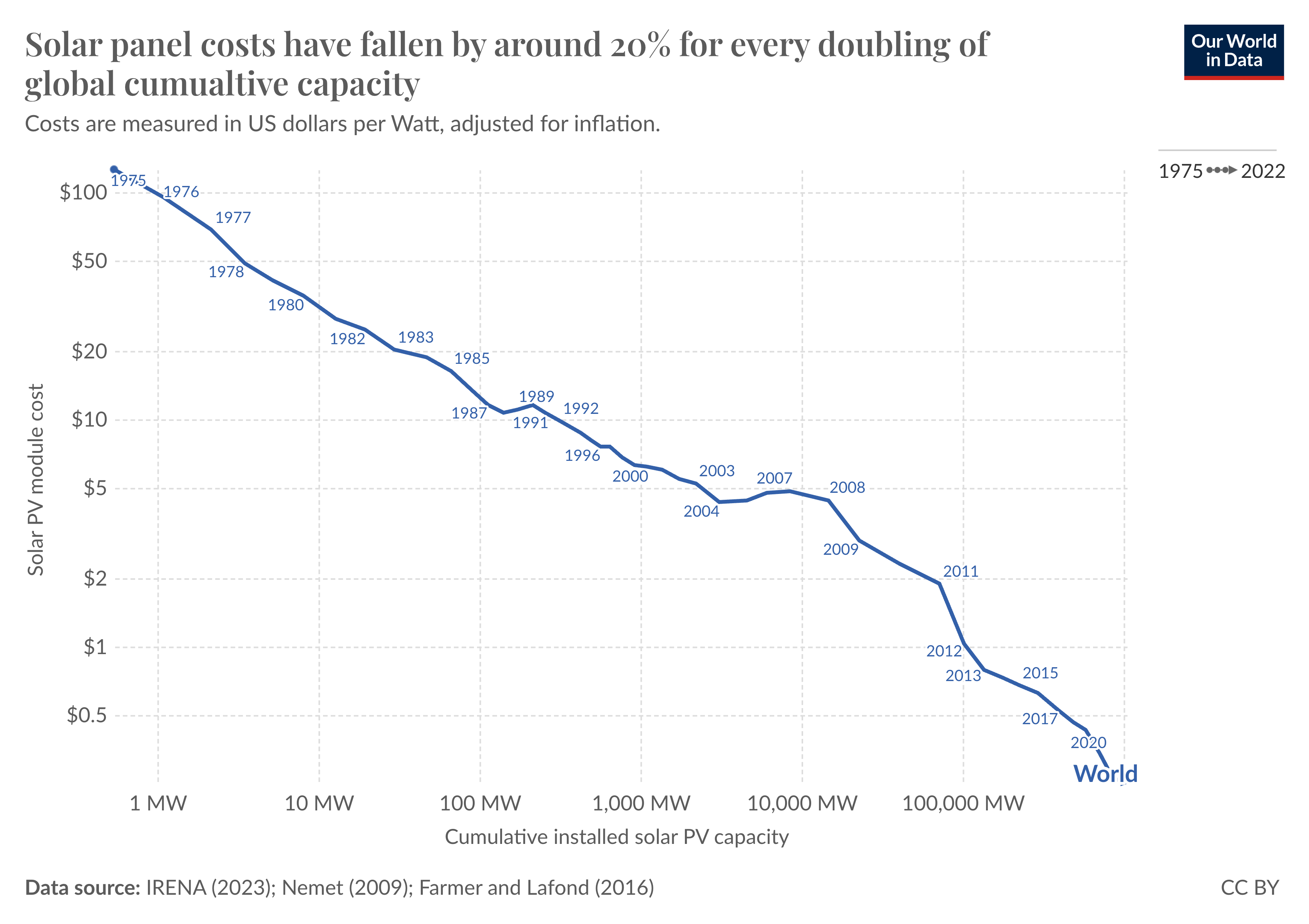

Slowroll can alleviate that pain, if you’re fine with non-security updates being delayed by up to six weeks or so.


Slowroll can alleviate that pain, if you’re fine with non-security updates being delayed by up to six weeks or so.


Hmm, Kate has a feature called “Sessions”, which might be able to do that.
You can create just one session and then in the settings, set it to always load that session:

Well, and there are those two checkboxes, which I’ve also marked. The “Newly-created unsaved files” sounds like what you want, but seems to be broken on my system. It just reopens an empty file for me. Is that also broken for you?


As others have already said, Kate should work as text editor. I think, the only thing that’s not built-in is base64 en-/decoding, but you can set that up like this:

That’s for decoding. For encoding, just change the name to “base64 encode” (exact name doesn’t matter) and remove the “–decode” from the Arguments-field.
This relies on a CLI utility called base64, which is going to be pre-installed on most distros.
It’s not entirely perfect, because it’ll always insert a newline, as that’s part of the base64 output. If you do want to get rid of that, you could write a tiny script and then call that script instead, but obviously, you don’t have to.
You can also install Kate on Windows, if you want to give it a test-ride: https://kate-editor.org/
(The base64 CLI won’t be available on Windows, though.)
My workplace preinstalls Ubuntu, personally I’m using openSUSE. I don’t even think that Ubuntu is particularly bad, I’m mainly frustrated with it, because it’s just slightly worse than openSUSE (and other distros) in pretty much every way.
It’s less stable, less up-to-date, less resilient to breakages. And it’s got more quirky behaviour and more things that are broken out-of-the-box. And it doesn’t even have a unique selling point. It’s just extremely mid, and bad at it.


The guy is the lead dev of the Budgie desktop environment. Budgie started out kind of reusing components from GNOME, but Strobl has been rather frustrated with GTK and the directions it took with GTK4, for various reasons: https://joshuastrobl.com/2021/09/14/building-an-alternative-ecosystem
(The disclaimer is important, some opinions on what alternative to use changed, but the frustrations with GTK remain.)
Yeah, solid counterexample. Wikipedia and other Wikis have a clearly defined goal, i.e. collect factually correct information about a specific topic, which is also a goal shared by enough people to drive collaboration.
Another cool example is the Mutopia Project, which basically archives sheet music. Contributors can just pick a piece of music and transcribe that, and they kind of don’t even have to talk to anyone for the project as a whole to benefit.
But then there is lots of examples, like writing a new song, writing a new novel etc., where the goal is not clearly defined, where it’s difficult to collaborate, because what you contribute might not mesh well with what the others provide.
I think, it’s mainly a matter of the works to which Creative Commons is typically applied, being less suitable for collaboration. You might occasionally see remixes, but that’s mostly it.
In the case of open-source, collaboration is what elevates it, and often makes it better than paid-for software.
You rarely see Creative Commons works that outdo paid-for works in terms of objective quality. Heck, chances are that more collaboration happens in paid-for works, because they can hire an editor, a sound engineer etc…


That prices for photovoltaic are dropping rapidly:

Your trouble with the clutch and watching the road, that will definitely get easier with practice.
But what always remains stressful is that lots of drivers are insane cunts. As in, they should be in a psychiatry. They’ll tailgate you, if you have the audacity to drive the speed limit.
And well, other factors can be at play. I’ve probably got some flavor of autism, so having everything around me rattle and explode, and needing to constantly pay attention to the road, that stresses me out due to sensory overload. Even after multiple years of practice, I’m more than glad to walk to the shops.


You can try to apply for a grant at Mozilla: https://www.mozilla.org/en-US/moss/secure-open-source/
Their list of “audits we’ve completed so far” ends in 2019, though, so no idea if they still have money for this.
Otherwise, sometimes governments or hacking contests, like Pwn2Own, do audits/pentests, but you pretty much just have to be a well-known open-source project either way…
Yeah, the distro installer even allows you to fully customize which packages should be installed, if you fancy that.
I mean, to some degree definitely yes. You do need some upfront knowledge and some editing steps can be quite tedious.
I zone out while shoving shapes around the place, so I actually enjoy doing it in my freetime.
Having said that, we are talking about icons. You usually don’t want those to be particularly complex anyways.
But the SVG format is also more powerful than one might expect.
You’ve got a collection of basic shapes. Particularly, paths allow you to draw essentially anything, including some really useful curves.
And you can also do some cool gradients and even animations.
And you can use fonts in the text element, but only like in HTML, i.e. you specify “bold” or “Times New Roman” and hope wherever it’s displayed has that font available. Would definitely not recommend that for an icon.
Inkscape allows converting text to a path, so that it doesn’t depend on the host system. So, if I ever want a font in an icon, I’d do that in Inkscape and then copy the path element that it created into my text editor.
I like to write SVG by hand with a text editor and Firefox, but that’s probably not for most people.
I mainly like it, because you’re entering all the coordinates as numbers, which makes ratios more apparent and also easy to work with…


There’s two things at play here.
MP3 (or WAV, OGG, FLAC etc.) provide a way to encode polyphony and stereo and such into a sequence of bytes.
And then separately, there’s Unicode (or ASCII) for encoding letters into bytes. These are just big tables which say e.g.:
01000001 = uppercase ‘A’01000010 = uppercase ‘B’01100001 = lowercase ‘A’So, what your text editor does, is that it looks at the sequence of bytes that MP3 encoded and then it just looks into its table and somewhat erronously interprets it as individual letters.


Firefox won’t be able to do this without Thunar supporting it, but someone else already posted that Thunar does support it.




I guess, you could buy a handful of USB sticks…


Breath of the Wild took a somewhat novel approach to open-world in that it filled the game world with lots of interesting landmarks, then gave you lots of movement options and just let you explore on your own.
In particular, because Nintendo took a risk and introduced this novel concept into an established series, it had a big audience and enough budget to really show off that this concept works.
That’s why lots of gamedevs took inspiration and steered their open-world games into similar directions.
You must’ve caught my comment shortly before I snuck that “non-security” into there. 🙃